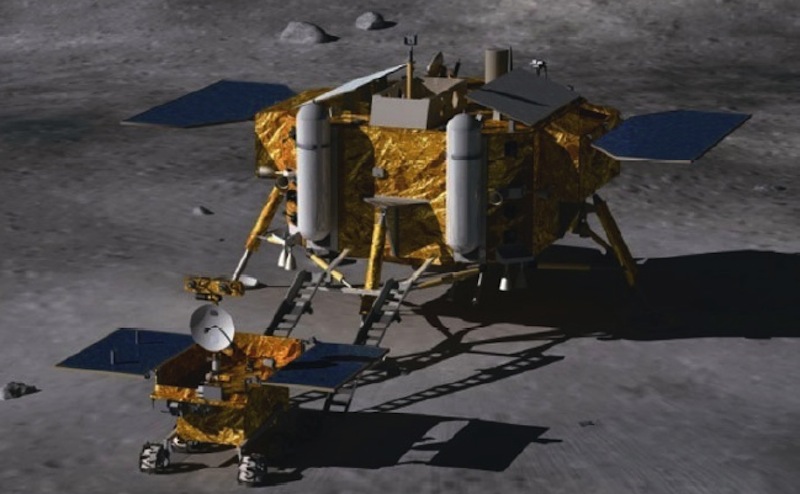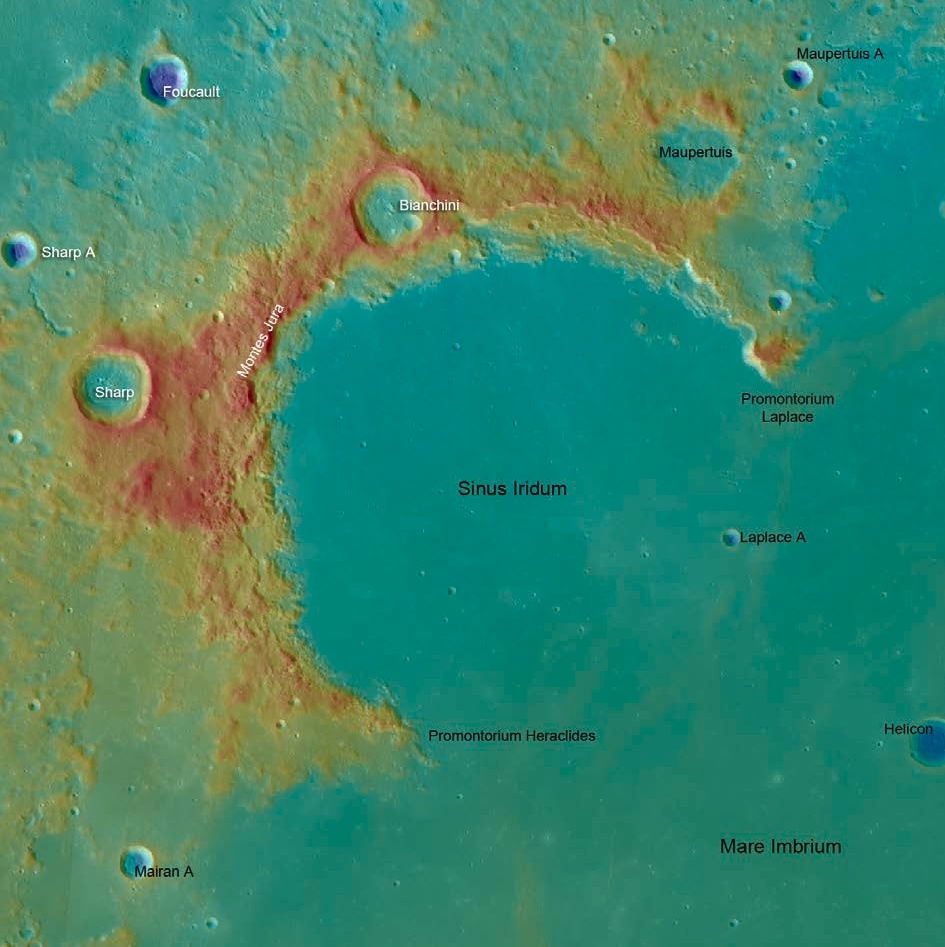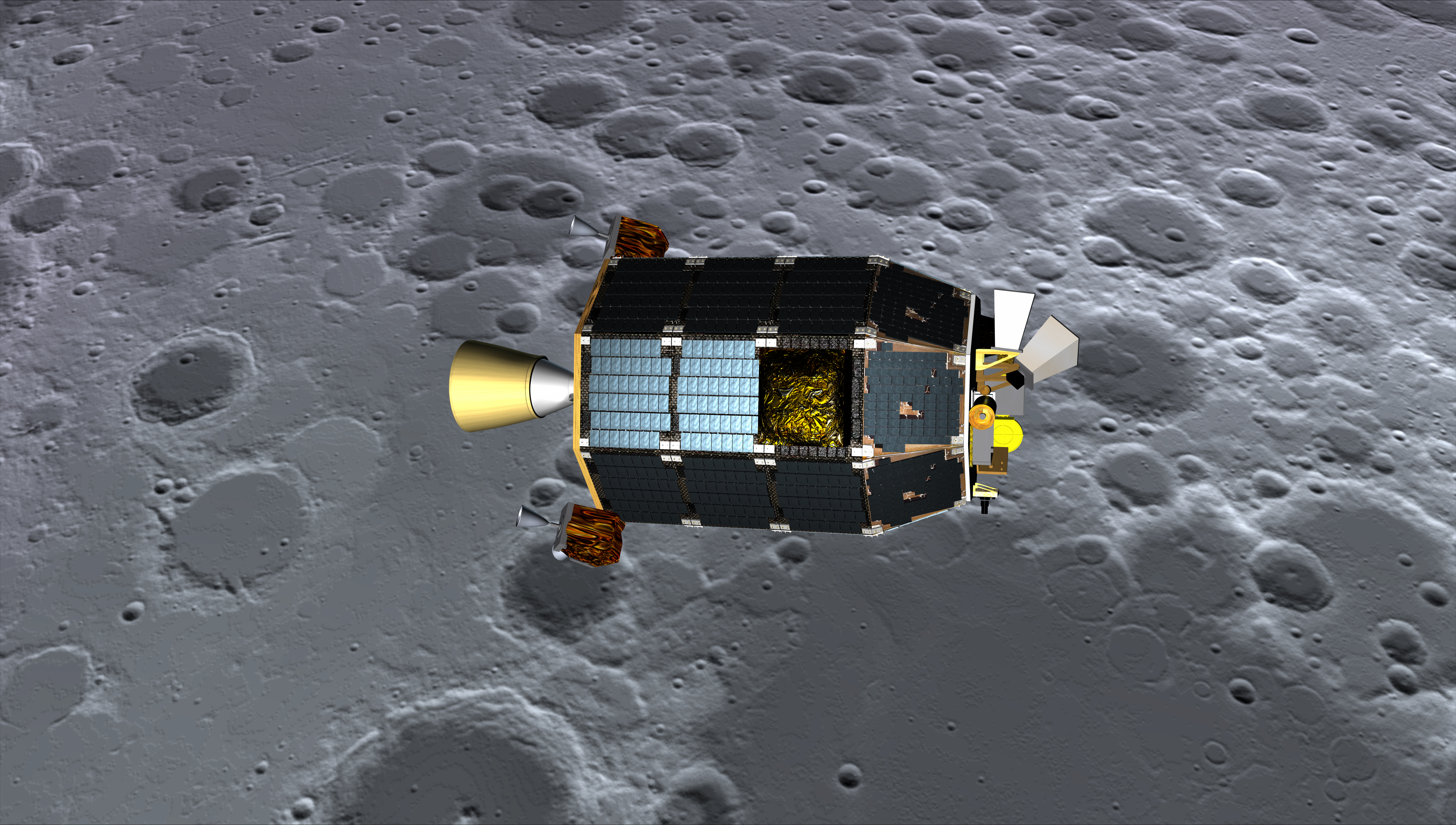
China's Next Moon Mission Targets Lunar 'Bay of Rainbows'

China is making major headway in its mission to land a rover on the moon — a big step forward in the nation's ambitious lunar exploration plans.
At China's Xichang Satellite Launch Center, the moon-bound Chang'e 3 spacecraft is undergoing its final tests ahead of a planned launch in early December. Meanwhile, a Long March 3B carrier rocket, reportedly modified with new technologies and improved reliability, is set to reach the launch center via train from Beijing on Friday (Nov. 1).
The touchdown target for the Chang'e 3 mission — a lander and a lunar rover — is thought to be Sinus Iridum, known as the Bay of Rainbows, a plain of basaltic lava on the moon, according to reports by China media outlets. An earlier Chinese lunar orbiter, Chang'e 2, eyed the moon-landing zone in 2010, showing the site's flat topography and other interesting features. [Moon Photos by China's Chang'e 2 Lunar Orbiter (Gallery)]
As for the rover's name, that is to be decided next month, based on nearly 190,000 entries on two China-based websites. According to the Beijing Times, "Yutu" ("jade hare" in Chinese) leads the list, while "Tansuo" ("explore") and "Lanyue" ("catch moon"), are the second and third choices, respectively.
Launch day
China space watcher Bob Christy of the informative website Zarya.info told SPACE.com that his best estimate for a China lunar launch is Dec. 1. "It could be a day or so later, but is unlikely to be earlier," he said.
Christy has taken a look at the launch windows.
Get the Space.com Newsletter
Breaking space news, the latest updates on rocket launches, skywatching events and more!
"For Dec. 1, the optimum launch time is around 14:00 to 15:00 UTC (9:00 a.m. to 10:00 a.m. EST)," he said. "It allows Chang'e to approach the moon from the north to give a better view of the transfer orbit from China than would the alternative — around 22:00 UTC (5:00 p.m. EST) for an approach from the south."
Sunrise over Sinus Iridum commences Dec. 14, Christy added, so landing will probably be a day or so later to ensure enough light.
"I have a Chinese document that says Chang'e will spend about 10 days in orbit before landing. Transit time is likely to be 4.6 days … so it points to Dec. 1 for launch," he said.

Bay of Rainbows
As for why China chose Sinus Iridum for the landing site, David Kring, senior staff scientist at the Lunar and Planetary Institute in Houston, has some ideas.
In an informal briefing document provided to SPACE.com, Kring showed the scientific advantages of selecting that region. But he also said that other factors may also have affected the landing site choice.
For example, China might be factoring in thoughts of returning lunar samples back to China in the future. Relatively little oomph is needed to rocket samples back to Earth from the Sinus Iridum region, Kring told SPACE.com
Sinus Iridum is an impact crater, measuring roughly 146 miles (235 kilometers) across, that was later flooded by basaltic lavas. It is located along the northwestern edge of the Imbrium basin.
In 1970, the then-Soviet Union's Luna 17 spacecraft landed nearby, dispatching the Lunokhod 1 moon rover, Kring said.
Rover tools
According to Kring's informal report, which draws from various Chinese sources, the solar-powered Chang'e 3 rover carries nearly 45 lbs. (20 kilograms) of payload and has a 6-mile (10 km) range after departing the lander. [20 Most Marvelous Moon Missions]
The six-wheeled robot sports navigation and panoramic cameras. The lower front portion of the rover carries hazard-avoidance cameras. The rover will hibernate at night and might survive three lunar nights (three Earth months).
The rover totes a robotic arm with an Alpha-Proton X-ray Spectrometer, or APXS.
That APXS tool could, among other duties, study recent impact crater material that’s been tossed out and about, revealing the material below the moon’s surface; look at ejected debris in crater rays and/or in secondary craters; and help researchers develop a better model for impact cratering processes, Kring said.

Advancing future exploration
The Chinese rover also appears to be outfitted with a ground-penetrating radar instrument. If so, that device can test models for regolith thickness, including rock abundances inferred from orbiting radar experiments, like the Diviner lunar radiometer experiment on NASA's Lunar Reconnaissance Orbiter.
Also, China's rover could demonstrate the utility of ground-penetrating radar to advance future exploration of the moon, Kring said.
In Kring's review, the Sinus Iridum mare basalt has modest titanium-ore content, except near its southeastern margin, where it has very high titanium-ore content.
Wait-and-see observations
One interesting side story involves NASA's Lunar Atmosphere and Dust Environment Explorer (LADEE), which recently entered orbit around the moon.
Whether the LADEE spacecraft could detect certain activities of China's Chang'e 3 mission is worth contemplating, according to SPACE.com contacts familiar with LADEE operations.
Also in a wait-and-see mode regarding how China's lander/rover operations will perform is Arizona State University's Mark Robinson, the principal investigator for LRO's Lunar Reconnaissance Orbiter Camera, or LROC.
"If Chang'e 3 is successful, everyone is pointing to a north Sinus Iridum landing spot," Robinson told SPACE.com. "I keep seeing east central Sinus Iridium near Laplace A [crater] as the target — nothing official."
Because that rumor has been floating about for more than a year, the LROC imaging team has made sure the camera has gotten the best possible coverage of the prospective landing locale, Robinson said. Before-and-after imaging is possible, he added, "and it will be fun to watch the rover move away from the lander, perhaps heading to Laplace A, which is a very spectacular crater."
Leonard David has been reporting on the space industry for more than five decades. He is former director of research for the National Commission on Space and is co-author of Buzz Aldrin's new book, "Mission to Mars – My Vision for Space Exploration," published by National Geographic. Follow us @Spacedotcom, Facebook or Google+. Originally published on SPACE.com.
Join our Space Forums to keep talking space on the latest missions, night sky and more! And if you have a news tip, correction or comment, let us know at: community@space.com.

Leonard David is an award-winning space journalist who has been reporting on space activities for more than 50 years. Currently writing as Space.com's Space Insider Columnist among his other projects, Leonard has authored numerous books on space exploration, Mars missions and more, with his latest being "Moon Rush: The New Space Race" published in 2019 by National Geographic. He also wrote "Mars: Our Future on the Red Planet" released in 2016 by National Geographic. Leonard has served as a correspondent for SpaceNews, Scientific American and Aerospace America for the AIAA. He has received many awards, including the first Ordway Award for Sustained Excellence in Spaceflight History in 2015 at the AAS Wernher von Braun Memorial Symposium. You can find out Leonard's latest project at his website and on Twitter.









